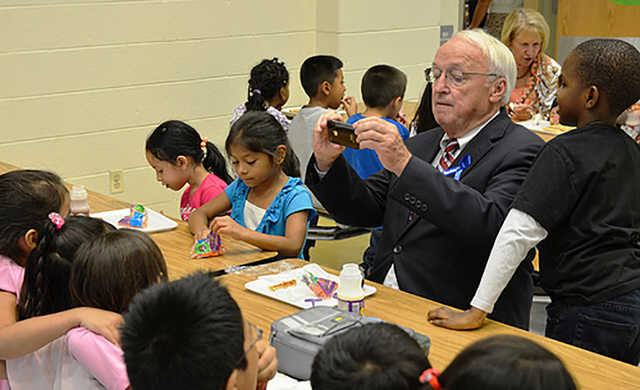
As the U.S. Department of Agriculture is celebrating the 50th anniversary of the School Breakfast Program, the program’s current top official reflects on the great strides the program has made in strengthening the health and nutrition of children in America.
The School Breakfast Program provides cash assistance to states to operate nonprofit breakfast programs in schools and residential child care institutions.
Starting the day with a well-balanced breakfast has been proven to contribute to the students’ ability to perform well in the classroom. Going forward, the U.S. Department of Agriculture will continue to support the School Breakfast Program by providing the resources and support necessary to give kids the kick start they need to be healthy and strong all day long.
Over the past several years, Nevada has seen one of the more significant increases in the nation in its school breakfast program.
“I think that’s a significant factor in a lot of rural areas for this reason; for many kids, they have to get on the bus very early in the morning,” said Kevin Concannon, USDA’s under secretary. “They may get right out of bed and get on the bus. In the past, with schools that did not have as much access to school breakfast, many of those kids would find themselves in the middle of the morning really being distracted because they’re hungry.”
The Food and Nutrition Service administers the program at the federal level. State education agencies administer it at the state level, and local school food authorities operate the program in schools.
In about a five-year period, Nevada has increased by about 50 percent the number of students in the state that are having breakfast at school. It’s just under 100,000 students right now that are having breakfast at school.
A program that began this school year, “Breakfast after the Bell,” created by the implementation of Senate Bill 503, is a big part of the jump in the state.
There are nine schools in the Nye County School District that participate in the program. They are Amargosa Middle School, Amargosa Valley Elementary, Beatty Elementary, Beatty High School, Beatty Middle School, Gabbs Middle/High School, J.G. Johnson Elementary School and Manse Elementary School.
The Breakfast after the Bell bill was signed into law by Gov. Brian Sandoval in June and required all Nevada schools with 70 percent or greater eligibility to implement an option for students to receive breakfast after the start of the school day.
The bill set aside $2 million in grant money to assist in operations for the program over the next two years.
Concannon explained that faculty members from schools nationwide boast of the benefits of students eating a well-balanced meal before school.
“When I travel the country … I hear the testimony from teachers, principals, school superintendents that breakfast is one of the most significant contributors to kids being able to concentrate better and fewer behavioral problems in the classroom,” he said.
Research shows that students who consume breakfast score higher on academic tests, have fewer behavioral issues and make fewer visits to the school nurse.
“There are fewer kids complaining of stomach aches, headaches, being restless and some schools it believes it even has an impact on attendance,” he said. “We know it’s making a difference and we’re very pleased with that, because we know if kids eat healthy, one, they’re going to learn and grow better and two, it’s a great way to educate kids to eat healthier foods. We love the attachment in schools.”
One of Concannon’s goals is to have Nevada kids who eat breakfast at around the same number as the number of children who eat lunch at school, but at this point it is well off the mark.
“There are about 200,000 students who eat lunch at school each day and breakfast is just a hair under 100,000 now,” he said.
Contact reporter Mick Akers at makers@pvtimes.com. Follow @mickakers on Twitter.